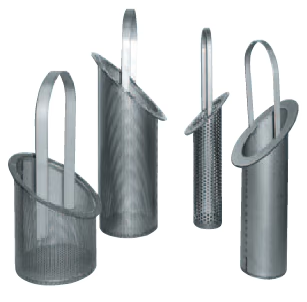Temporary inline stainless steel strainers are invaluable components in industrial and commercial settings, serving to protect equipment and processes by removing debris and contaminants from fluid streams. Proper installation and maintenance of these strainers are essential to ensure optimal performance and longevity. In this guide, we'll walk you through the steps to install and maintain your temporary inline stainless steel strainer effectively.
Installation:
1. Select the Proper Location:
Identify the optimal location for installing the temporary inline stainless steel strainer within your pipeline system. Consider factors such as accessibility, flow direction, and proximity to equipment that requires protection from debris.
2. Prepare the Pipeline:
Shut off the flow of fluid in the pipeline and relieve any pressure by opening valves or drains downstream of the installation point. Clean the pipeline to remove any dirt, debris, or contaminants that could interfere with the installation process.
3. Mounting the Strainer:
Position the temporary inline stainless steel strainer in the desired location along the pipeline. Ensure that the strainer is oriented correctly according to the flow direction indicated by the arrow on the housing. Use appropriate fittings and hardware to secure the strainer in place, ensuring a tight and leak-free connection.
4. Connection:
Connect the inlet and outlet ports of the strainer to the corresponding sections of the pipeline using compatible piping materials and fittings. Tighten all connections securely to prevent leaks and ensure proper alignment of the strainer within the pipeline.
5. Pressure Testing:
Once the strainer is installed, perform a pressure test to verify the integrity of the installation and ensure that there are no leaks or structural weaknesses. Gradually increase the pressure within the system while monitoring for any signs of leakage or abnormalities.
6. Commissioning:
With the installation complete and the pressure test successful, gradually reopen valves to restore the flow of fluid through the pipeline. Monitor the operation of the temporary inline stainless steel strainer to confirm that it is functioning correctly and effectively removing debris from the fluid stream.
Maintenance:
1. Regular Inspection:
Schedule routine inspections of the temporary inline stainless steel strainer to check for signs of wear, corrosion, or damage. Pay attention to the condition of the strainer mesh or perforations and ensure that it remains free from clogs or blockages.
2. Cleaning:
Periodically clean the strainer to remove accumulated debris and contaminants that could impede flow or compromise filtration efficiency. Depending on the level of contamination, cleaning may involve backwashing, chemical cleaning, or manual removal of debris from the strainer element.
3. Replacement of Strainer Element:
If the strainer mesh or perforations become damaged or excessively clogged, replace the strainer element with a new one to maintain optimal filtration performance. Refer to the manufacturer's guidelines for the recommended replacement interval and procedures.
4. Corrosion Protection:
Inspect the stainless steel housing of the strainer for any signs of corrosion or deterioration. Implement corrosion protection measures such as applying protective coatings or using corrosion-resistant materials to prolong the lifespan of the strainer and ensure reliable operation.
5. Documentation and Record-Keeping:
Keep detailed records of maintenance activities, including inspection dates, cleaning procedures, and any repairs or replacements performed on the temporary inline stainless steel strainer. This information will help track the strainer's performance over time and identify any recurring issues that may require attention.
Conclusion
By following these installation and maintenance guidelines, you can ensure that your temporary inline stainless steel strainer inWrentham operates efficiently and effectively, providing reliable protection for your equipment and processes. Regular inspection, cleaning, and proactive maintenance are key to maximizing the lifespan and performance of your strainer, ultimately contributing to the smooth operation of your industrial or commercial facility.







No comments:
Post a Comment